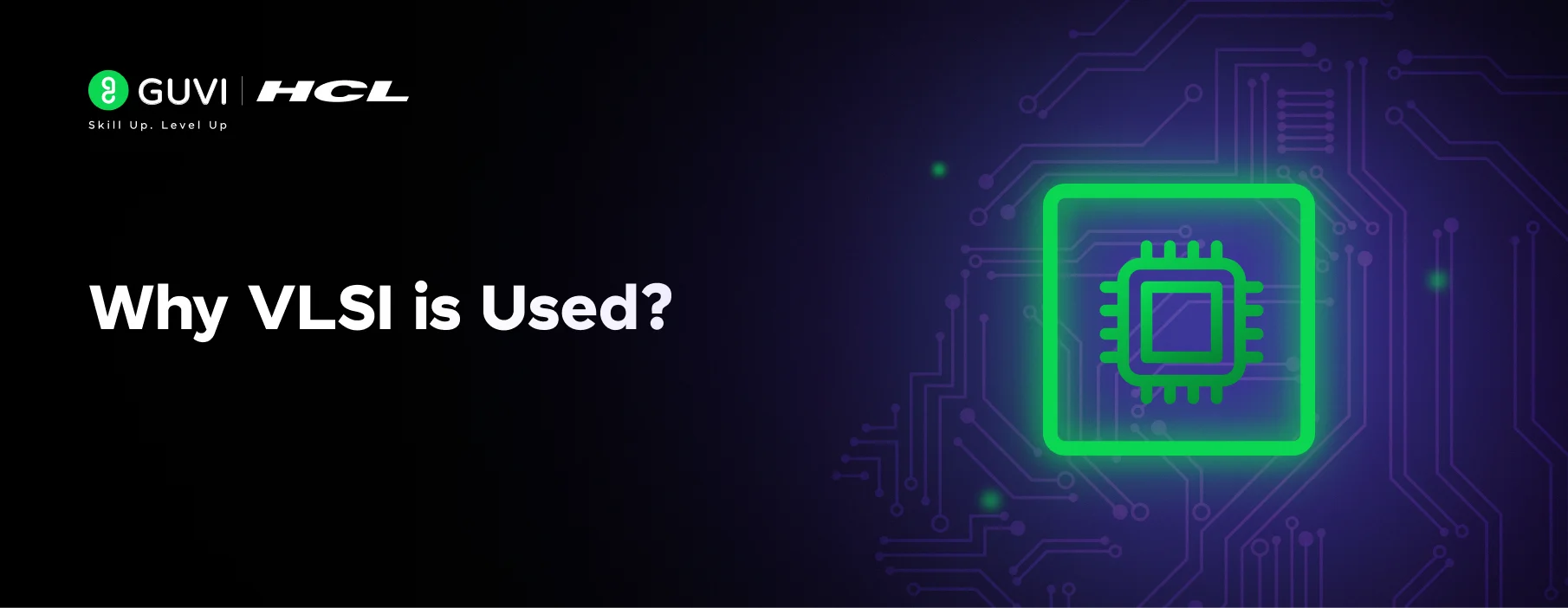
Why is VLSI Used? A Comprehensive Exploration
Jan 22, 2025 5 Min Read 2993 Views
(Last Updated)
In the ever-evolving world of technology, we continuously demand faster, smaller, and more efficient devices. From the smartphones we use daily to advanced medical equipment and automotive systems, electronics have become an integral part of modern life.
At the core of these innovations lies Very Large Scale Integration (VLSI), a transformative technology that has reshaped how electronic devices are designed and manufactured.
But have you ever wondered why is VLSI used extensively? Why is it the foundation of modern electronics? This article aims to answer these questions by explaining what VLSI is, why VLSI is widely used, and how it impacts various industries. So, without further ado, let us get started!
Table of contents
- What is VLSI Design?
- Why is VLSI Used?
- Miniaturization: The Need for Smaller Devices
- High Performance: Faster and Smarter Devices
- Cost Efficiency: Making Technology Affordable
- Low Power Consumption: Extending Battery Life
- High Reliability and Durability
- High-Speed Communication and Data Processing
- Scalability and Integration of Multiple Functions
- Applications of VLSI
- Computing and Data Processing
- Consumer Electronics
- Telecommunications
- Automotive Systems
- Medical Technology
- Future Trends in VLSI
- Conclusion
- FAQs
- What is VLSI and why is it important?
- What are the primary applications of VLSI technology?
- How does VLSI contribute to the miniaturization of electronic devices?
- What are the emerging trends in VLSI technology?
- Why is VLSI design crucial for modern electronics?
What is VLSI Design?
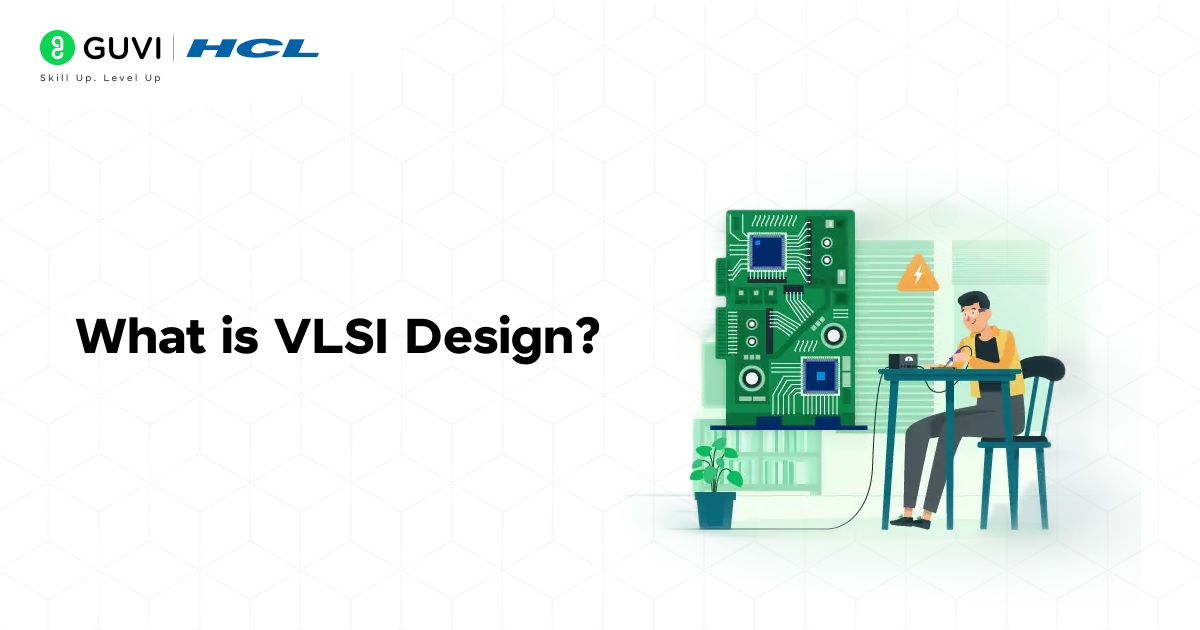
Very Large Scale Integration (VLSI) is a technology that enables the integration of millions or even billions of electronic components such as transistors, resistors, and capacitors onto a single silicon chip.
This miniaturization and integration have revolutionized the electronics industry, enabling complex circuits to perform intricate tasks within compact and efficient devices.
For example, the processor in your smartphone, which performs millions of computations per second, is a product of VLSI technology.
Why is VLSI Used?

The importance of VLSI lies in its ability to address key challenges in modern electronics. Let’s break it down into the primary reasons:
1. Miniaturization: The Need for Smaller Devices
Modern consumers demand compact devices that are easy to carry and use. VLSI technology enables this by integrating complex circuits into a single chip, drastically reducing the size of electronic devices.
How Does Miniaturization Benefit Us?
- Portable Electronics: Without VLSI, we wouldn’t have smartphones, tablets, or wearable devices like smartwatches. Miniaturization makes these devices lightweight and easy to use.
- Space Optimization: Compact chips allow more components to fit into smaller spaces, enabling multifunctional devices.
- Enhanced Mobility: Miniaturization is essential in industries like aerospace and automotive, where space and weight are critical factors.
2. High Performance: Faster and Smarter Devices
VLSI significantly enhances the performance of electronic systems. By bringing components closer together on a chip, VLSI reduces signal travel time, leading to faster data processing.
Performance Enhancements Through VLSI
- Improved Processing Speed: High-performance processors with billions of transistors allow devices to perform multiple tasks simultaneously.
- Optimized Memory Access: Modern VLSI-based systems have faster memory access, ensuring quick retrieval and storage of data.
- Support for Complex Algorithms: Technologies like artificial intelligence, machine learning, and 5G networks rely on the processing power enabled by VLSI chips.
3. Cost Efficiency: Making Technology Affordable
While the initial design and manufacturing of VLSI chips require significant investment, their mass production lowers the overall cost per unit. This has been a game-changer in making advanced technology accessible to the masses.
How Does VLSI Reduce Costs?
- Economies of Scale: Once a chip design is finalized, it can be replicated at scale, reducing per-unit costs.
- Integrated Functionality: VLSI consolidates multiple functions into a single chip, eliminating the need for multiple components.
- Automation: VLSI manufacturing processes are highly automated, reducing labor and overhead costs.
4. Low Power Consumption: Extending Battery Life
In today’s world of portable gadgets, energy efficiency is crucial. VLSI chips are designed to consume minimal power without compromising performance, making them ideal for battery-powered devices.
Why Low Power Matters
- Extended Battery Life: Power-efficient chips mean longer battery life for smartphones, laptops, and IoT devices.
- Sustainability: Reduced power consumption contributes to lower energy usage, aligning with global efforts for sustainability.
- Thermal Management: Less power means less heat generation, improving the reliability and lifespan of electronic devices.
5. High Reliability and Durability
VLSI chips are more reliable than traditional circuits. With fewer external connections, they are less prone to mechanical failures, ensuring stable and durable performance over time.
How Reliability Impacts Industries
- Medical Devices: In critical applications like pacemakers and diagnostic tools, reliability is non-negotiable.
- Automotive Systems: Modern vehicles rely on durable VLSI chips for engine control, safety features, and infotainment systems.
- Space Exploration: Spacecraft and satellites use highly reliable VLSI-based systems to withstand extreme conditions.
6. High-Speed Communication and Data Processing
VLSI circuits play a fundamental role in high-speed data communication and real-time processing. As data speeds increase with the expansion of 5G, fiber optics, and cloud computing, VLSI chips help manage data transmission, error correction, and signal integrity.
Why is High-Speed Processing Important?
- Enables seamless 4K/8K video streaming and cloud gaming.
- Supports high-speed 5G, Wi-Fi 6, and satellite communication.
- Enhances data centers and cloud storage for real-time AI processing.
7. Scalability and Integration of Multiple Functions
One of the biggest advantages of VLSI is its ability to integrate multiple functions into a single chip, making devices more compact and feature-rich.
Modern SoCs (System-on-Chips) incorporate processors, memory, graphics, AI accelerators, and security modules all within a single chip, optimizing performance while saving space and reducing power consumption.
Why is Integration Important?
- Reduces chip count, making devices more compact.
- Allows smartphones and computers to handle AI, graphics, and networking in one chip.
- Simplifies circuit design, lowering costs and increasing efficiency.
Applications of VLSI
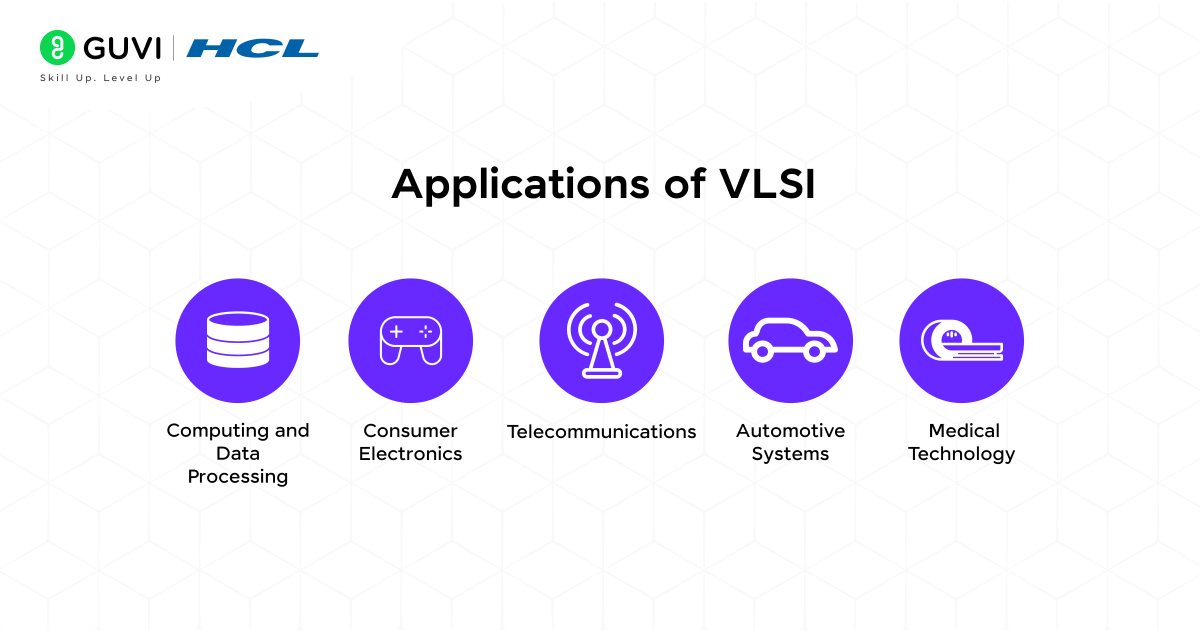
VLSI technology is omnipresent, powering devices and systems across various industries. Let’s explore some of its key applications:
1. Computing and Data Processing
Computing devices rely heavily on VLSI technology to achieve high processing power, compact designs, and energy efficiency. Microprocessors, memory chips, and data storage systems are all developed using advanced VLSI design techniques.
Examples of VLSI in Computing
- Microprocessors: CPUs from Intel, AMD, and ARM are classic examples of VLSI chips.
- GPUs: Graphics processors for gaming and AI applications rely on VLSI for high-performance parallel computing.
- Storage Solutions: SSDs and RAM modules are designed using VLSI technology for speed and efficiency.
2. Consumer Electronics
The rapid growth of smartphones, tablets, smart TVs, and gaming consoles is largely due to advancements in VLSI. The ability to pack powerful processors, graphics chips, and memory into small, energy-efficient devices has revolutionized the consumer electronics industry.
Examples of Consumer Applications
- Smartphones: Chips like Apple’s A-series and Qualcomm’s Snapdragon are VLSI marvels.
- Wearables: Devices like smartwatches and fitness trackers use VLSI for sensors and connectivity.
- Smart Home Devices: Voice assistants, smart thermostats, and connected lighting systems rely on VLSI chips.
3. Telecommunications
VLSI technology plays a crucial role in modern communication systems, enabling faster data transfer, efficient signal processing, and enhanced security. The evolution from 3G to 4G, and now to 5G networks, has been driven by VLSI-based baseband processors, RF transceivers, and network infrastructure hardware.
VLSI in Telecom
- Base Stations: VLSI chips power the hardware that handles high-speed data transmission.
- Modems and Routers: Internet connectivity devices rely on VLSI for seamless communication.
- Satellite Communications: VLSI is integral to satellite systems for global connectivity.
4. Automotive Systems
Modern vehicles have transformed into highly automated, software-driven machines, thanks to VLSI technology. Engine control units (ECUs), advanced driver-assistance systems (ADAS), infotainment systems, and electric vehicle (EV) power management all rely on VLSI-based microcontrollers and sensors.
Applications in Automobiles
- ADAS: Advanced Driver-Assistance Systems like adaptive cruise control and lane-keeping systems.
- Infotainment: VLSI enables high-definition screens and audio systems in modern cars.
- Engine Control: Chips manage fuel efficiency, emissions, and engine performance.
5. Medical Technology
Healthcare has witnessed a technological revolution, with VLSI powering diagnostic equipment, wearable health monitors, and biomedical implants. Devices like MRI and CT scanners, pacemakers, insulin pumps, and hearing aids use custom VLSI chips to enhance performance and accuracy.
Medical Applications
- Imaging Devices: CT scanners and MRI machines use VLSI for accurate imaging.
- Wearable Monitors: Heart rate monitors and glucose trackers rely on VLSI for compact and reliable designs.
- Biomedical Implants: Devices like pacemakers use VLSI to ensure long-term functionality.
Future Trends in VLSI
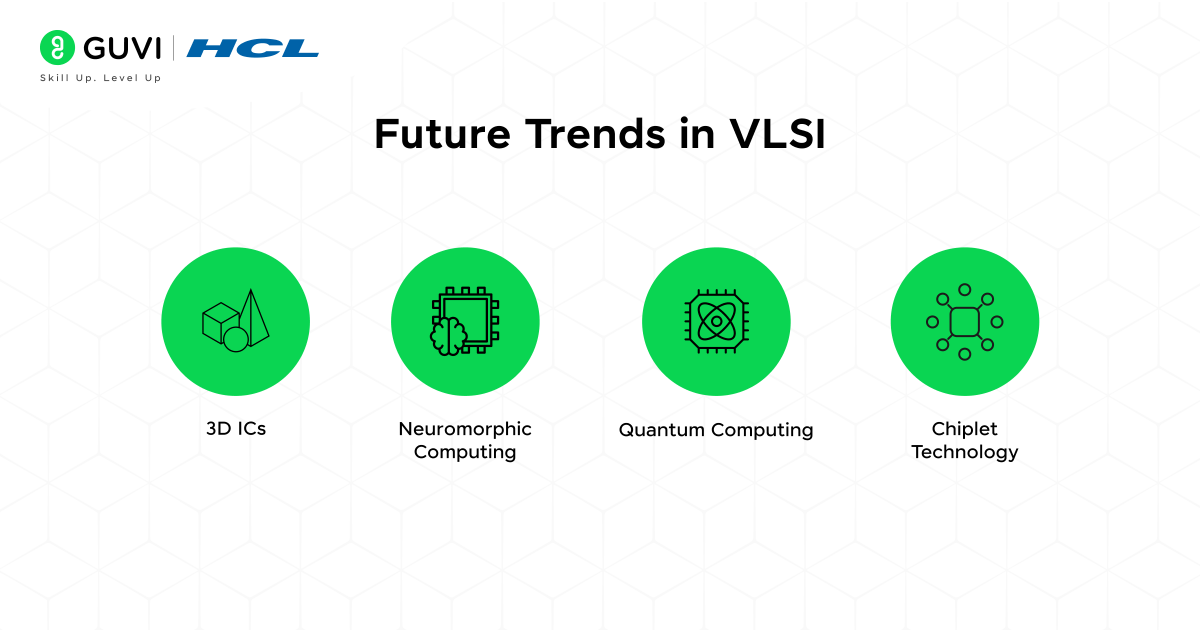
The journey of VLSI doesn’t stop here. Emerging technologies promise to push the boundaries of what VLSI can achieve:
- 3D ICs: Traditional VLSI chips are built in a single plane, but 3D IC technology stacks multiple layers of circuits vertically. This reduces signal delays, improves power efficiency, and increases chip density, making it ideal for AI processors, data centers, and high-performance computing (HPC).
- Neuromorphic Computing: Inspired by the human brain, neuromorphic chips use specialized architectures to perform computations like biological neurons. These chips enable energy-efficient AI models, real-time decision-making, and advanced robotics.
- Quantum Computing: VLSI will play a role in the development of scalable quantum processors. Researchers are working on hybrid quantum-VLSI systems to bridge classical and quantum computing, which could lead to breakthroughs in encryption, optimization problems, and drug discovery..
- Chiplet Technology: Instead of designing a monolithic chip with all functions integated, chiplet-based architectures break the chip into smaller, specialized modules that can be combined like building blocks. This trend is gaining traction in high-performance computing, GPUs, and AI-driven applications.
Beyond its fundamental benefits, VLSI technology enables cutting-edge advancements in security, AI, communication, and next-gen computing.
If you want to learn VLSI design through a step-by-step process guided by a professional mentor that includes Digital Electronics, UNIX, and even Shell Scripting, consider enrolling in GUVI’s Certified VLSI Design Course which not only teaches you everything about the subject but also provides you with an industry-grade certificate!
Conclusion
VLSI technology has revolutionized the electronics industry, enabling the creation of smaller, faster, and more efficient devices. From powering everyday gadgets to driving advancements in healthcare and automotive systems, VLSI is the backbone of modern innovation.
As we move towards a future filled with AI, IoT, and quantum computing, the importance of VLSI will only grow. Understanding its applications and benefits not only highlights its current significance but also opens doors to exploring its future potential.
If you’ve ever marveled at the power of modern technology, remember—it’s all made possible because of VLSI.
FAQs
VLSI, or Very Large Scale Integration, involves integrating thousands to billions of transistors onto a single chip, enabling the creation of compact, high-performance electronic devices essential in modern technology.
VLSI is pivotal in various fields, including computing (microprocessors, memory chips), consumer electronics (smartphones, tablets), telecommunications (networking equipment), automotive systems (engine control units), and medical devices (pacemakers, imaging equipment).
By integrating numerous components onto a single chip, VLSI reduces the size and power consumption of electronic systems, facilitating the development of compact and portable devices.
Current trends include the development of 3D integrated circuits, AI-driven design automation, neuromorphic computing, and advancements in quantum computing integration, all aimed at enhancing performance and efficiency.
VLSI design enables the creation of complex, reliable, and efficient integrated circuits, forming the backbone of contemporary electronic devices and systems across various industries.





















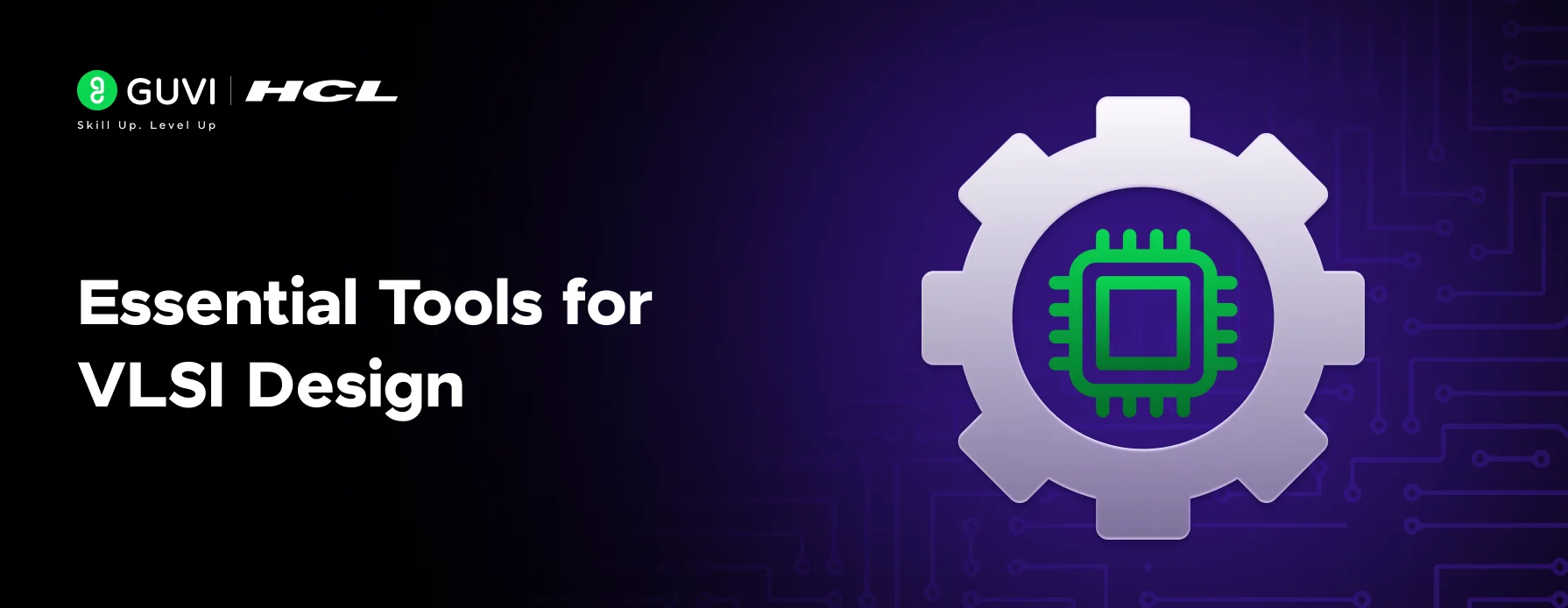
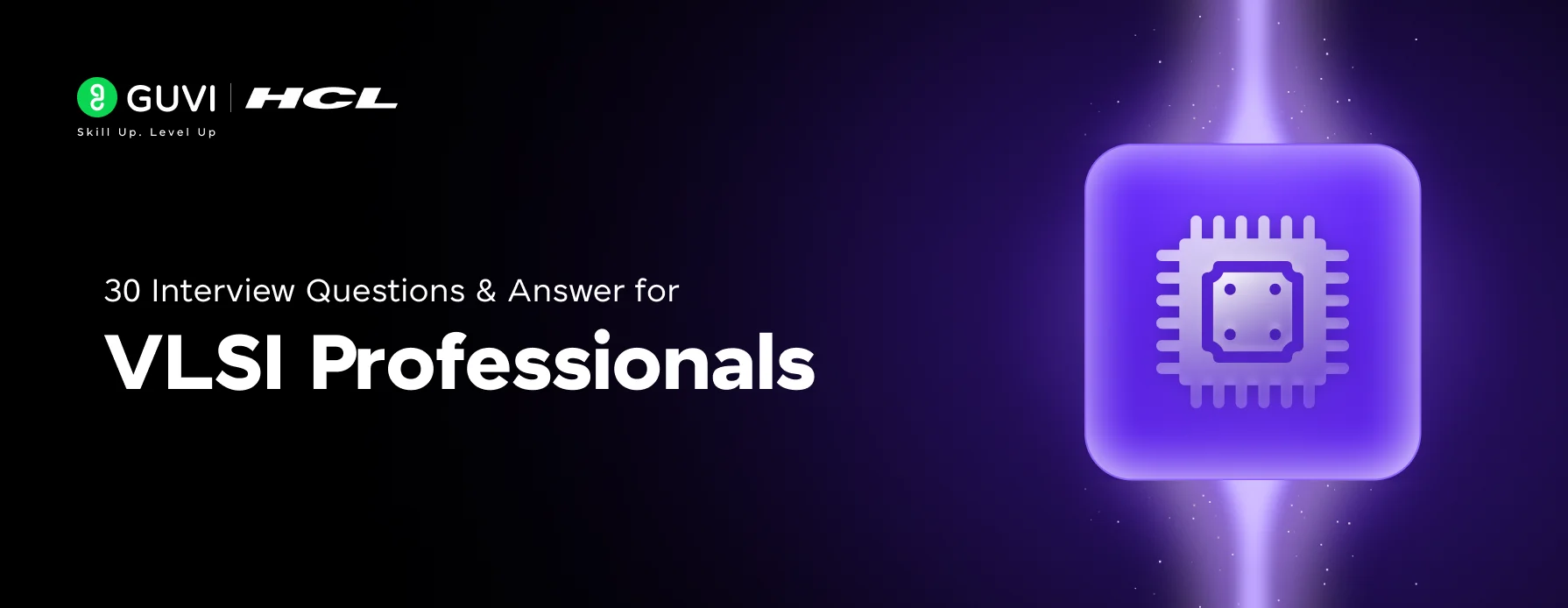
![Top 8 VLSI Design Job Roles [2025] 8 vlsi design job roles](https://www.guvi.in/blog/wp-content/uploads/2025/03/Top-8-VLSI-Design-Job-Roles.png)
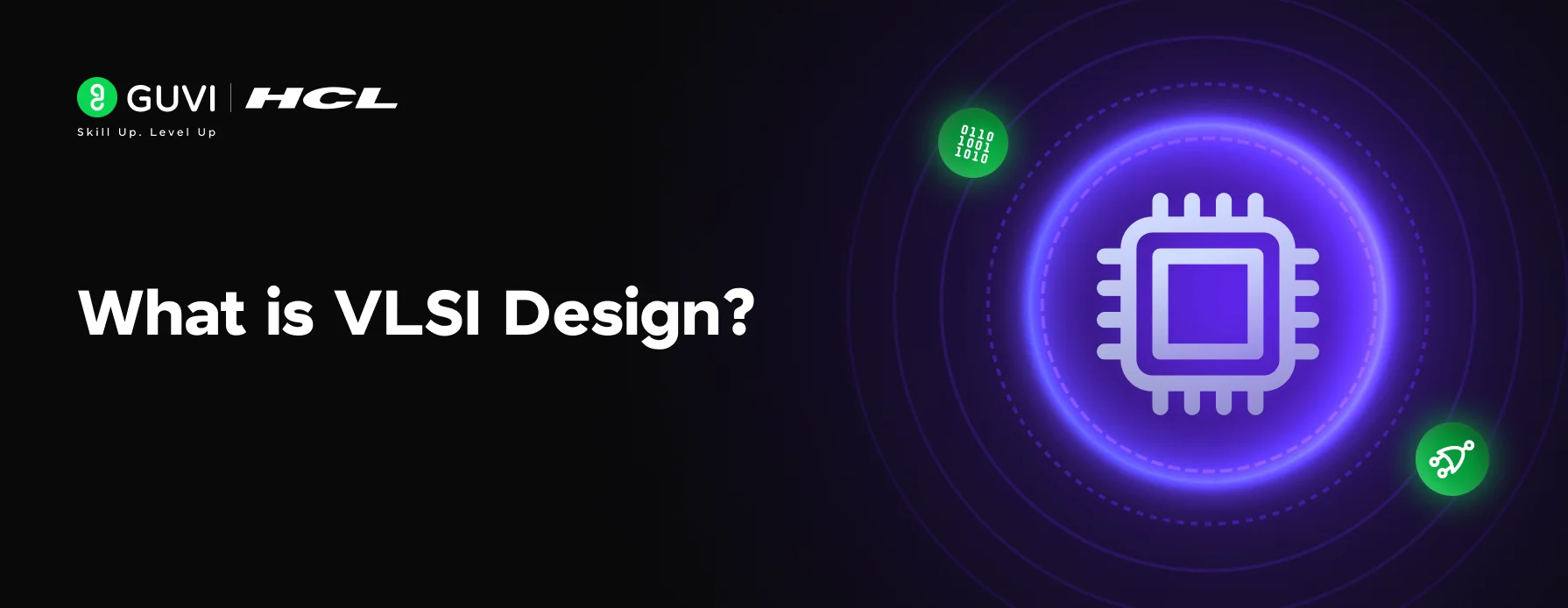
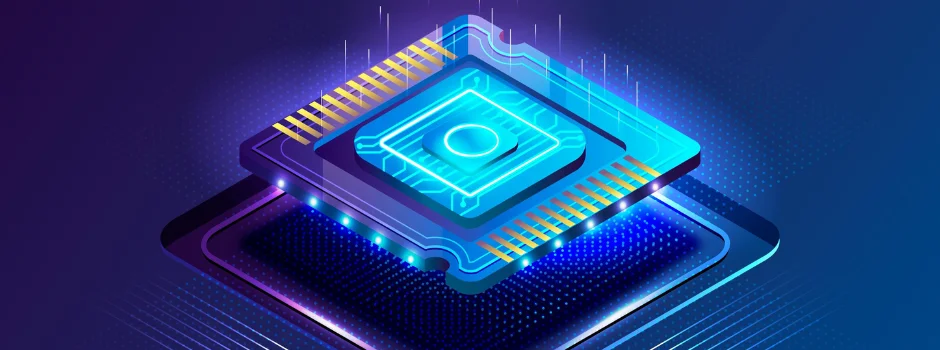
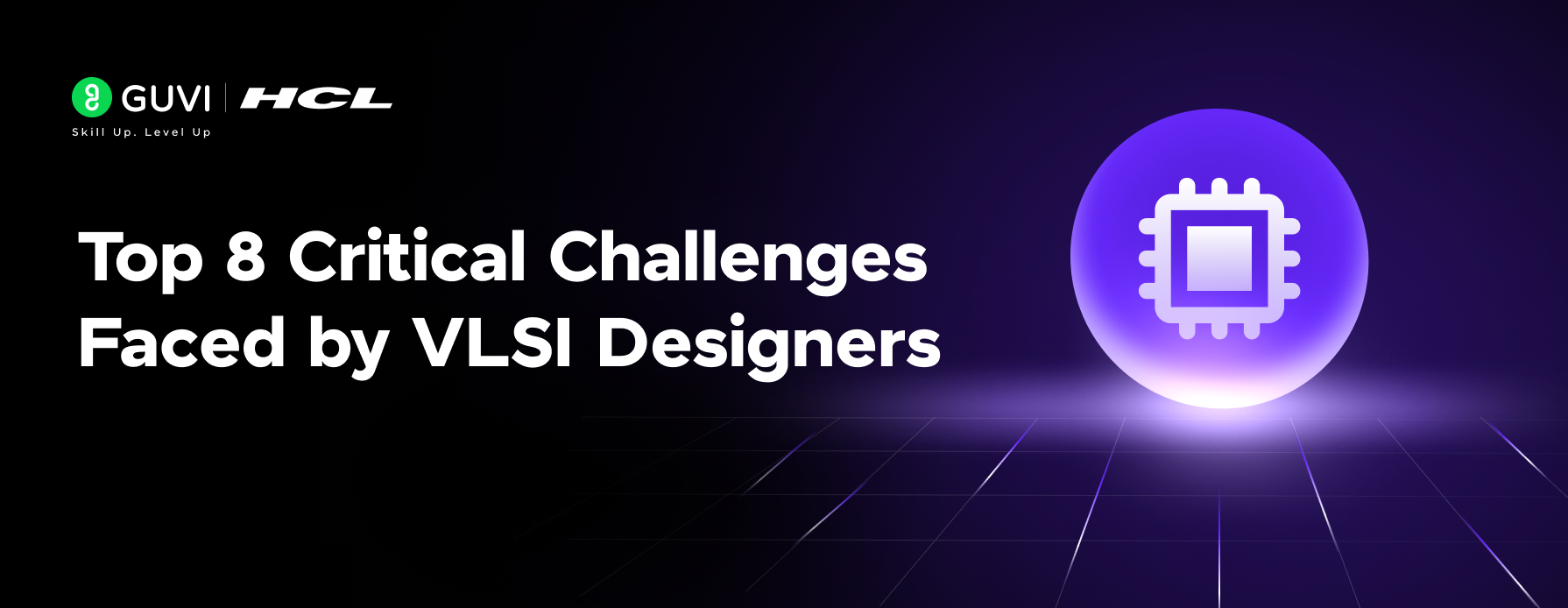

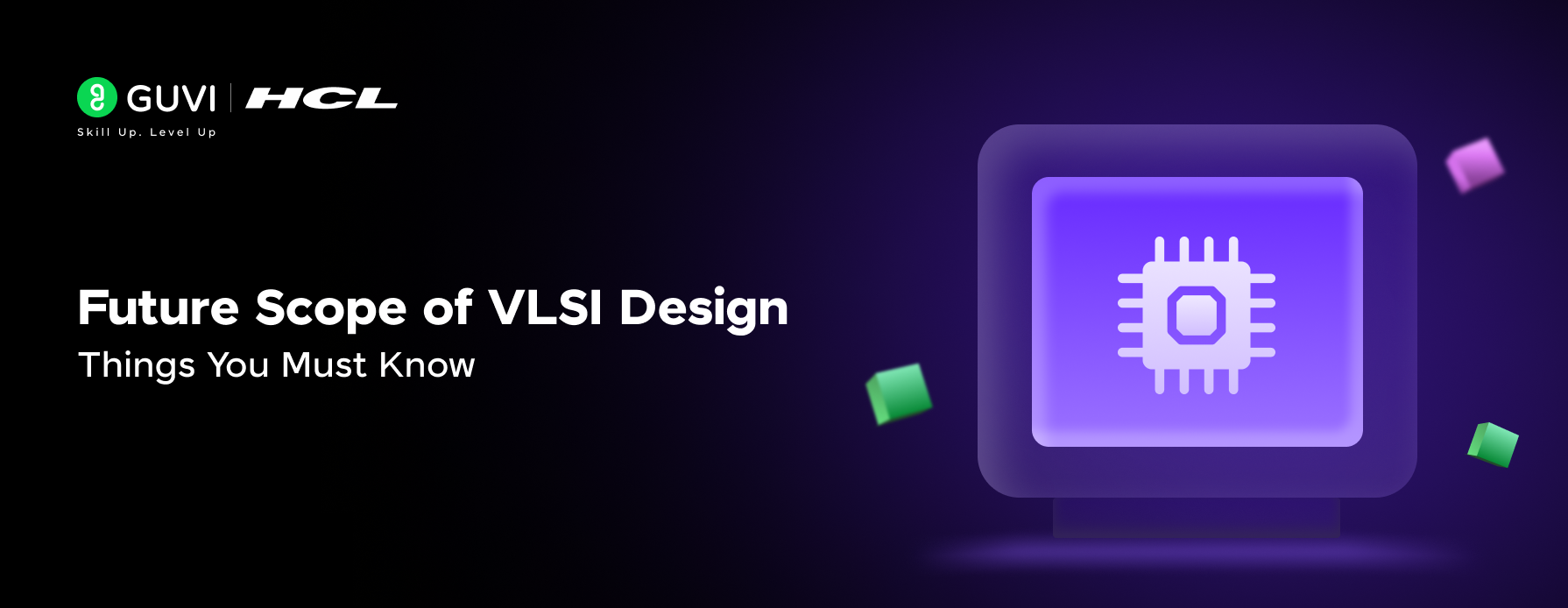


Did you enjoy this article?